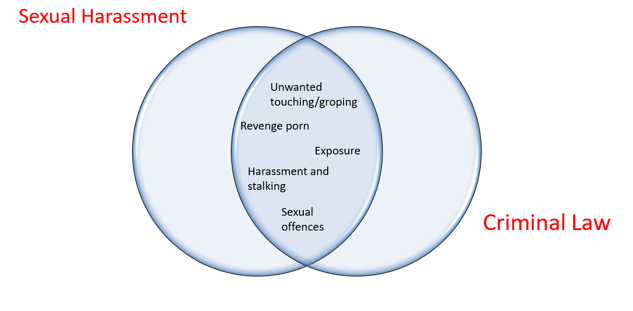What is sexual harassment?
Sexual harassment covers a wide range of behaviours, some of which overlap with the criminal law.
Under s.26 (2) of the Equality Act 2010 harassment is unwanted conduct of a sexual nature which has the purpose or effect of violating the recipient’s dignity or creating an intimidating, hostile, degrading, humiliating or offensive environment. It is a prohibited conduct under the Equality Act 2010, for which redress lies in the civil courts.
There is no criminal offence of sexual harassment in English law. The types of behaviours or conduct which make up sexual harassment are varied and may include: verbal harassment such as whistling, catcalling, sexual comments, sexual innuendo, telling sexual jokes and stories, spreading rumour about a person’s sex life; non-verbal harassment such as looking someone up and down, displaying pictures of a sexual nature, sending emails with a sexual content, making sexual gestures, asking for sexual favours. Sexual harassment will overlap with the criminal law on sexual offences once any touching of the other person is involved for example, physical unwanted sexual advances, kissing, touching, hugging, stroking, patting of someone’s clothes, body, hair, rubbing up against someone, where the touching is sexual. Thus patting someone on the bottom may constitute both a sexual assault and sexual harassment and could be pursued in the criminal courts as a sexual assault. Some forms of sexual harassment may overlap with other criminal offences such as harassment and stalking, revenge porn.
In the workplace
Under the Equality Act 2010: Sexual harassment is unwanted conduct of a sexual nature.
It has the purpose or effect of violating the dignity of a worker, or creating an intimidating, hostile, degrading, humiliating or offensive environment for them.
Something can still be considered sexual harassment even if the alleged harasser didn't mean for it to be. It also doesn't have to be intentionally directed at a specific person.
For more information see ACAS: http://www.acas.org.uk/index.aspx?articleid=6078

